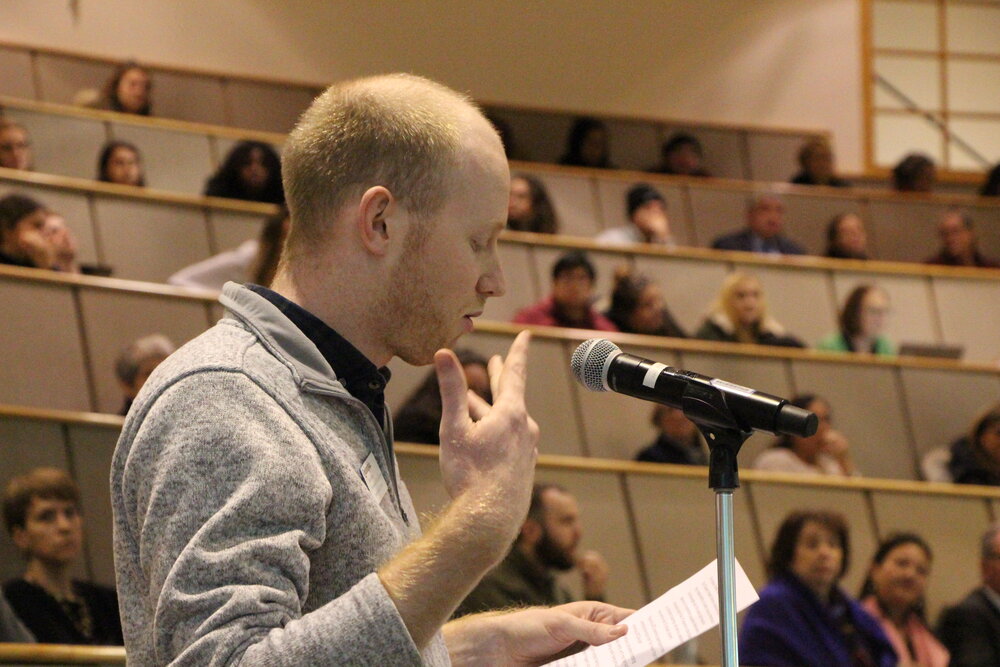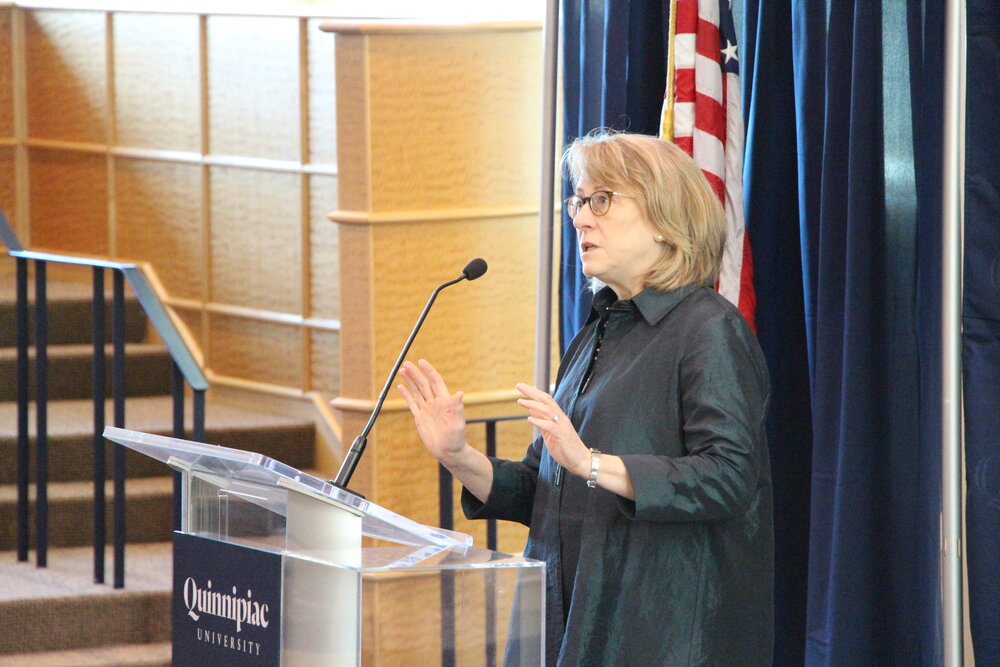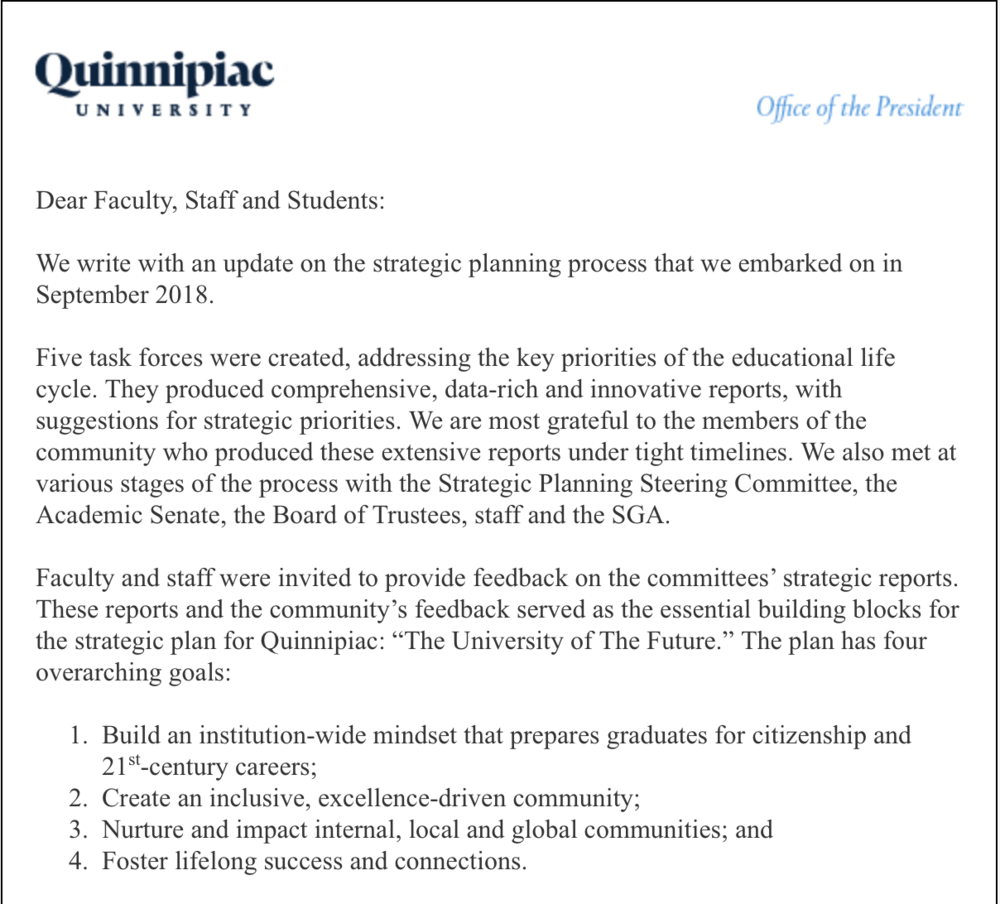
President Judy Olian. Courtesy: Quinnipiac University
HAMDEN, Conn. — In 2018, Judy Olian moved from her home in California to Hamden, Conn. to accept her leadership role as president of Quinnipiac University. Since the move, she has embraced change and is working to improve the university in many different areas, such as student education and community relations.
“What I’ve come to so appreciate here is the agility and nimbleness around change,” President Olian said. “If you’re an institution that can really turn on a dime, and I’m not saying we can turn on a dime, but it’s a hell of a lot faster than what was possible at the University of California. It’s a tremendous advantage and asset.”
Since beginning her tenure at Quinnipiac, President Olian has developed a strategic plan to better the university. This plan involves four pillars, including preparing students for careers in the 21st century, developing inclusive excellence, improving the wellbeing of the community and fostering lifelong learning and connections.
“I think the community embraced the change and the strategic plan,” Olian said. “Hook, line and sinker really embraced it. There’s an aura of excitement around change.”
In order to develop strategies to improve aspects of a university that was so new to her, President Olian spent her first few months simply listening.
“If you’re able to listen, you’ll learn an awful lot,” she said. “So, I tried to do that. I went around and met with the deans, the staff, the student groups, the government, and tried to see what people loved about Quinnipiac and where they saw opportunities. That formed the basis for our strategic planning process.”
Also included in the plan are new fields of study, such as environmental sciences, and an increase in data analytics across the curriculum to ensure students are data-savvy entering the 21st century workforce.
Although President Olian is focused on student education, her focus on student wellbeing is just as intense. She announced that the university has plans to launch a large wellness center in order to take care of both cognitive and emotional readiness in students, in addition to career readiness.
“The wellbeing center is going to be facilitated by physical fitness facilities, a wellness service center and programming,” Olian said. “Whatever it is that you need as a healthy foundation for life, we want this to be a part of the foundation.”
Another substantial announcement made during her presidency was the reveal of the Rocky Top Pub on the York Hill Campus. She believes the pub will improve social interaction between students and alumni.

The current interior of the future Rocky Top bar, On the Rocks. Credit: Peter O’ Neill
“There will be games in the People’s United Center. Having a beer if you’re of age or just grabbing food if you’re not is a part of college,” Olian said. “You learn every time you connect socially. We also want people to have fun at Quinnipiac, and this is a part of having fun.”
The atmosphere of new leadership and change is felt not only by President Olian but by members of the student body. Junior Student Government Vice President Sophia Marshall believes President Olian has made a huge impact on the culture of the campus and the administration.
“She makes it a point to really engage with the student body and in student events,” Marshall said. “I think she’s come in with a really great plan to renovate the school within the next five to 10 years.”
Marshall immersed herself into student government during her first year at Quinnipiac. At that time, former president John Lahey was in charge. However, she says she already sees differences between the two leaders.

Quinnipiac’s economic contribution. Credit: Samantha Bousquet
“While President Lahey had a great tenure, he wasn’t as responsive to students towards the end,” Marshall said. “She’s come and created an immense, positive impact on the campus.”
In addition to working on Quinnipiac-focused initiatives, President Olian is determined to build a stronger connection with the surrounding communities of Hamden and North Haven.
“I think we’re crossing that rubicon and people are starting to see the value that Quinnipiac brings,” Olian said. “Obviously, it’s tremendous economic value.”
According to the Connecticut Conference of Independent Colleges, Quinnipiac contributed over $3.1 billion to the Connecticut economy in 2017. Students themselves spent nearly $100 million in the surrounding community.
Although the economic contribution is substantial, some Hamden residents do not enjoy the experience of living in a college town, which is something Olian has realized.
“I think that sometimes there’s a little bit of frustration for some residents in some parts of the community that students are not respectful enough of their neighbors,” she said. “Of course, we are chagrined any time we hear of an episode, though they are rare.”
In 2015, Mayor Curt Leng stated that Quinnipiac students, for the majority, are good students. However, there are some issues with students not being compassionate and respectful neighbors in the community. Since then, he says he has seen improvements.
“I am thankful for the improved efforts to address these important neighborhood issues that the university has taken, including the great outreach efforts and commitment shown by Vice President and Chief of Staff Bethany Zemba and others to work on this issue in collaboration with the town,” Mayor Leng said.
President Olian continues to work on improving the university and its relationship with the surrounding communities.
“What we want is for everyone to appreciate the value of having students and a university in their backyard,” Olian said.













